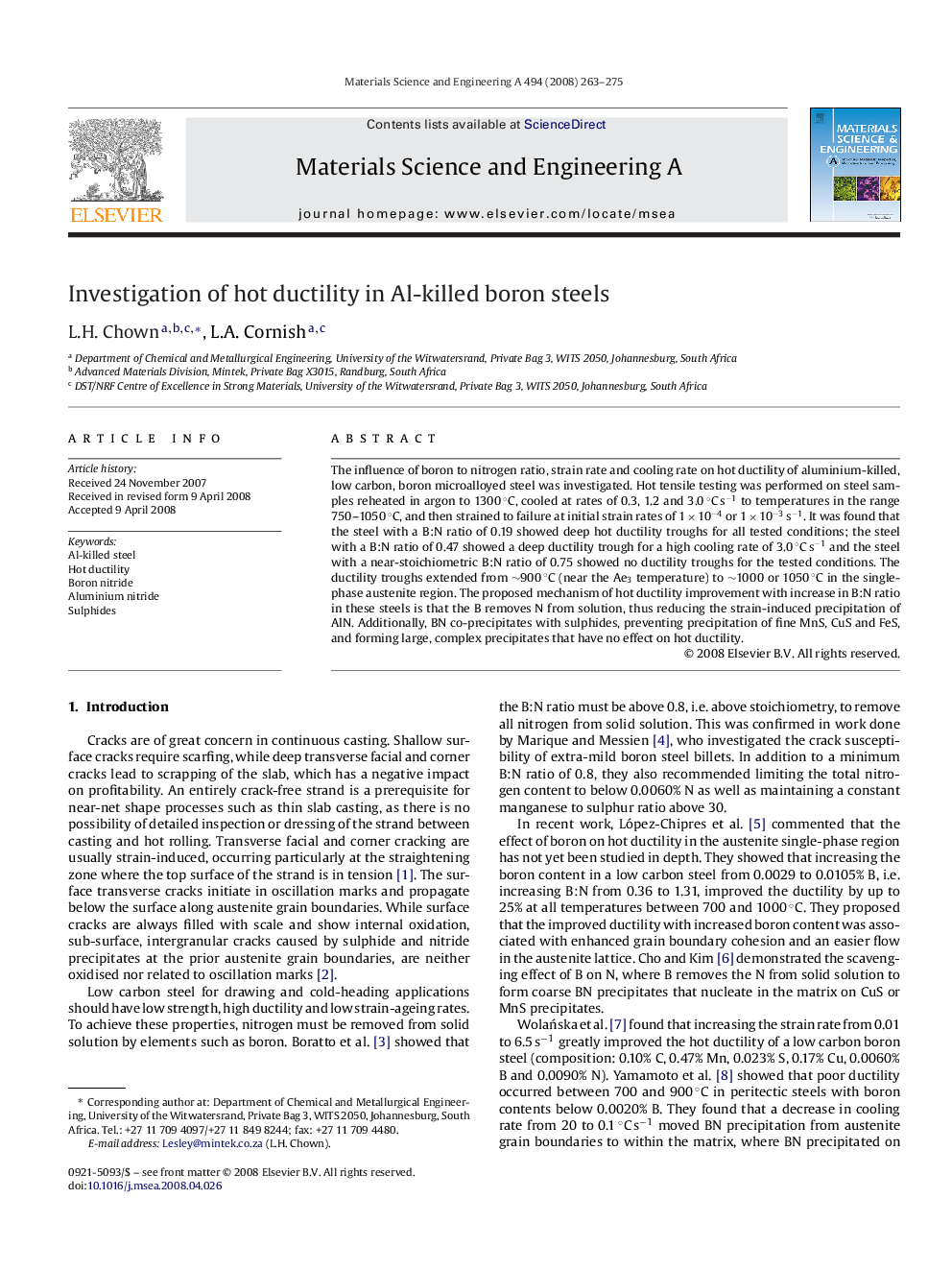| Article ID | Journal | Published Year | Pages | File Type |
|---|---|---|---|---|
| 1581979 | Materials Science and Engineering: A | 2008 | 13 Pages |
Abstract
The influence of boron to nitrogen ratio, strain rate and cooling rate on hot ductility of aluminium-killed, low carbon, boron microalloyed steel was investigated. Hot tensile testing was performed on steel samples reheated in argon to 1300 °C, cooled at rates of 0.3, 1.2 and 3.0 °C sâ1 to temperatures in the range 750-1050 °C, and then strained to failure at initial strain rates of 1 Ã 10â4 or 1 Ã 10â3 sâ1. It was found that the steel with a B:N ratio of 0.19 showed deep hot ductility troughs for all tested conditions; the steel with a B:N ratio of 0.47 showed a deep ductility trough for a high cooling rate of 3.0 °C sâ1 and the steel with a near-stoichiometric B:N ratio of 0.75 showed no ductility troughs for the tested conditions. The ductility troughs extended from â¼900 °C (near the Ae3 temperature) to â¼1000 or 1050 °C in the single-phase austenite region. The proposed mechanism of hot ductility improvement with increase in B:N ratio in these steels is that the B removes N from solution, thus reducing the strain-induced precipitation of AlN. Additionally, BN co-precipitates with sulphides, preventing precipitation of fine MnS, CuS and FeS, and forming large, complex precipitates that have no effect on hot ductility.
Related Topics
Physical Sciences and Engineering
Materials Science
Materials Science (General)
Authors
L.H. Chown, L.A. Cornish,
